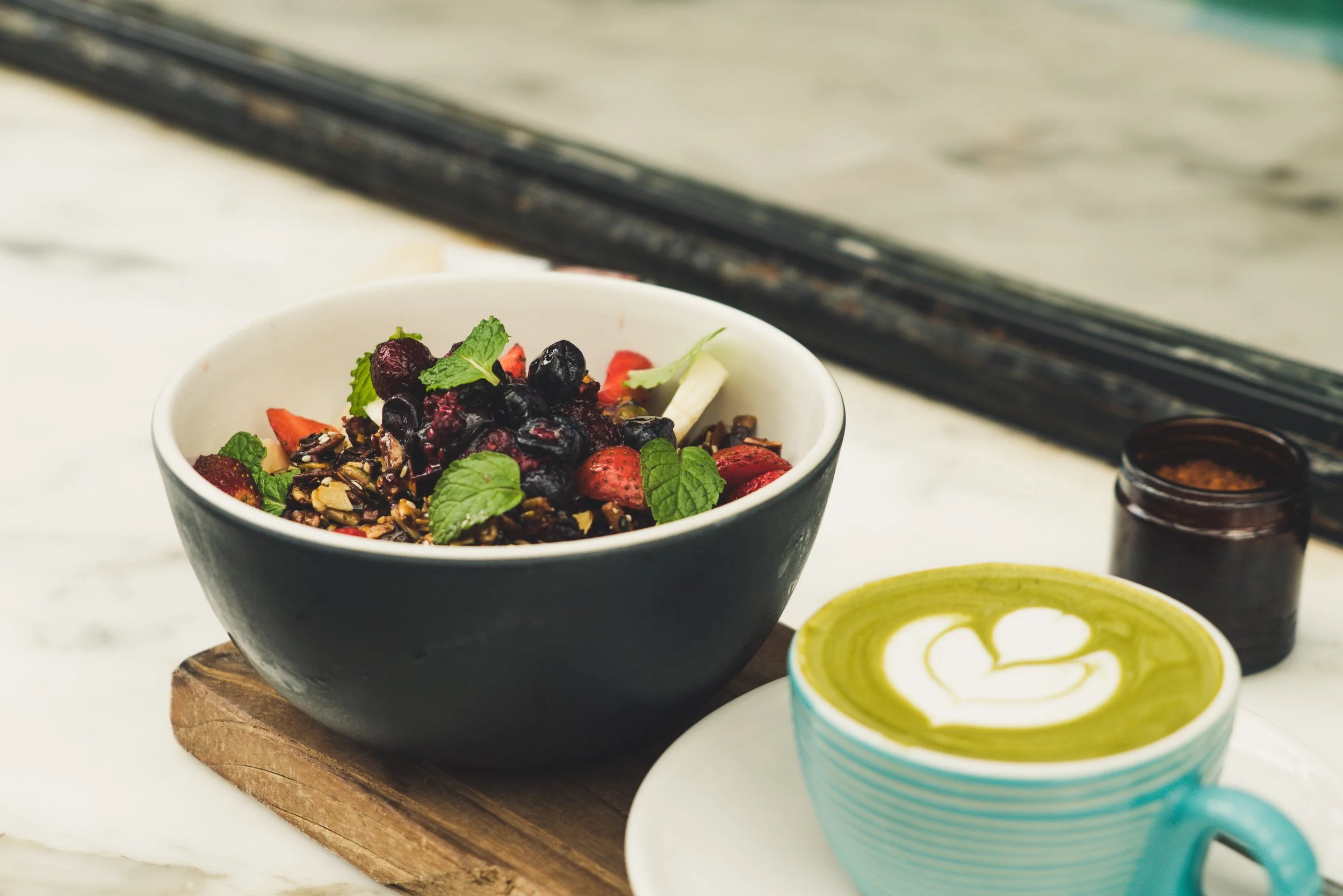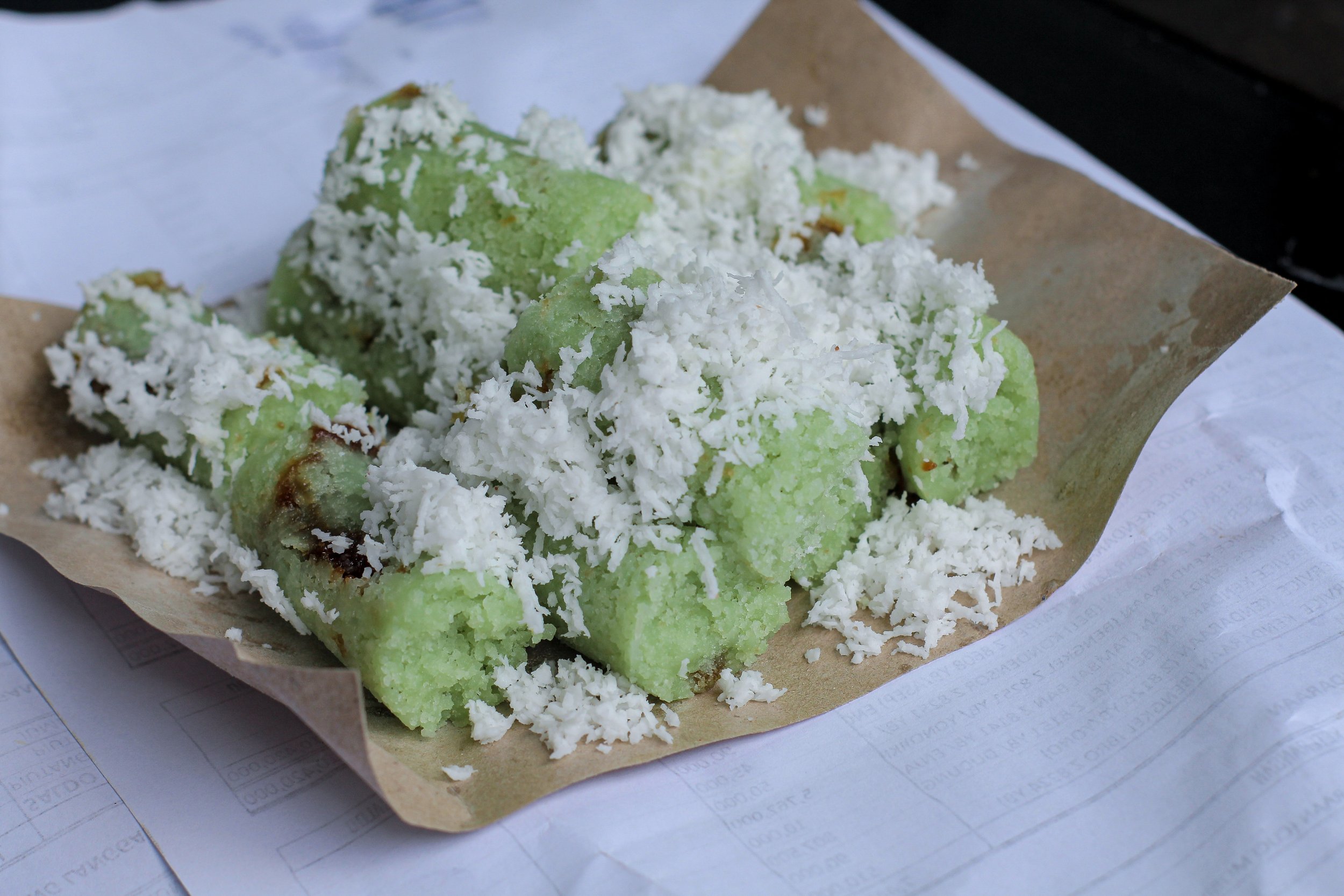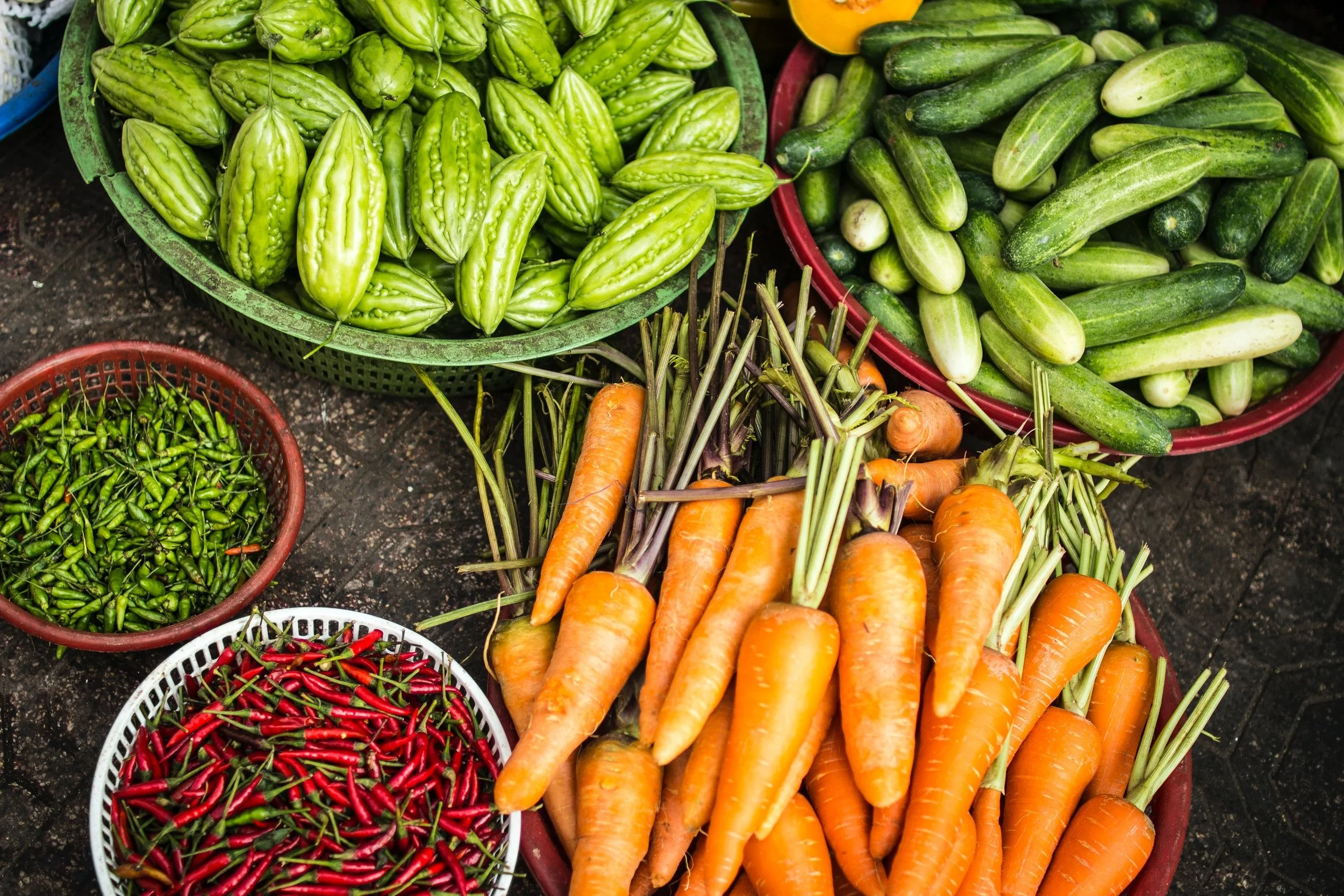My Vegan Travel Guide To Indonesia
Welcome to the diverse and wonderful world of Indonesian food.
Cultural experiences are a significant part of any trip to Indonesia. Engaging with local communities can provide insights into the values and traditions that shape the country. While traditional Indonesian cuisine might pose challenges for vegans, finding ways to connect with locals and share plant-based meals is possible. I encourage you to look beyond the tourist hub and discover authentic Indonesian cuisine in other locations. Each region has its traditional cooking methods, unique flavours and speciality ingredients for which the city is famous.
Vegan Lifestyle In Indonesia
Meat and seafood still play a major role in the local cuisine, and many say that they don't understand the vegan lifestyle or see a need to stop eating meat.
Meat is still consumed for certain holidays, religious ceremonies and celebrations.
A recent survey in 2019 highlighted the following:
Reasons for not eating plant-based foods in Indonesia
It is difficult to find it where I live: 46%
It costs more than the original: 35%
Did not see a need for plant-based alternatives to meat: 25%
Plant-based doesn't taste as good as the original: 22%
Not sure of the ingredients compared to the original: 12%
Other reasons: 9%
Believe plant-based is not nutritious: 3%
So, is the vegan movement making progress in Indonesia? Karim Taslim, the head of the World Vegan Organisation, said, “Veganism is definitely on its way to becoming mainstream."
Did you know Indonesia was rated one of the most vegetarian-friendly destinations globally? After Bali, Jakarta is now the second most vegan-friendly city in Indonesia.
According to the Vegetarian Global Index, Indonesia easily caters to vegetarians and vegans and is one of the world’s best places to find vegetarian food.
Meat consumption in Indonesia is far lower than in other locations on a global scale.
Meat, fish and egg are often a side dish to the main staple ingredient; rice.
Meat such as chicken or beef might feature on the plate, but it is easily replaced with tofu, tempeh or fresh vegetables.
Indonesian Food Culture
Aside from steamed white rice, Indonesian cuisine relies on rice noodles, steamed rice cake, wheat noodles and cassava.
Travel around the region, and you will also see yellow rice rich with the taste of turmeric served with green beans tempeh and topped with shredded coconut. Traditional sauces are based on ingredients like chilli, peanuts and coconut milk.
Chilli paste, known as sambal, is the most popular accompaniment to any dish, along with satay sauce.
Indonesia's culinary heritage is fascinating with over 17,000 islands, 300 ethnicities, and a past filled with trade links to the Middle East, India, China and Europe.
Traditional Indonesian cuisine is primarily based on herbs and spices, giving each meal its significant taste and aroma. There is commonly a mix of sweet, sour, salty, and bitter flavours in any meal. Coriander seeds, pepper, clove, nutmeg, cumin, ginger, candlenuts, basil, lemongrass, chilli and turmeric are widely used in Indonesian cooking.
Indonesian food is prepared in various ways, such as shallow or deep-fried, grilled over hot coals, simmered, steamed and baked, and does not require complex kitchen utensils.
You will see rice and vegetable dishes mixed in the wok on the side of the street, curries bubbling away in large pots, and rice steaming in banana leaves.
Is Vegan Food Expensive?
Eating vegan or vegetarian is no more expensive than eating meat, dairy, eggs, and seafood daily. Omitting the chicken, fish, or egg from your meal and adding vegetables, tofu, and tempeh will always be less expensive. It all comes down to your food choices.
The good news is that plant-based meal options in Indonesia are very affordable for tourists.
Don't just go for just imported vegan food products or Western foods. This is where it can get expensive by comparison. Instead, swap the meat, eggs and seafood for fresh fruits, vegetables, local grains, tofu and tempeh.
Enjoy the traditional meals with meat alternatives to keep prices the same, if not cheaper. For example, order a vegetable curry instead of chicken curry.
These are just some of the traditional and affordable dishes that are easily adapted to be vegan-friendly:
Nasi Goreng: This classic Indonesian fried rice dish can easily be made vegan by omitting meat and eggs and using tofu or tempeh as a protein source.
Gado-Gado: A delicious salad of blanched or steamed vegetables, such as spinach, bean sprouts, and cabbage, dressed in peanut sauce.
Tempeh and Tofu Dishes: Tempeh and tofu are traditional Indonesian protein sources commonly used in various dishes. They can be marinated, fried, or stir-fried to create flavourful and satisfying meals.
Lontong Sayur: A dish featuring rice cakes served with a rich and aromatic coconut vegetable stew. This comforting dish is popular among vegans and non-vegans alike.
Karedok: A raw vegetable salad with a peanut sauce similar to Gado-Gado. It's refreshing, crunchy, and perfect for those seeking a lighter meal.
Sambal and Condiments: Indonesian cuisine is known for its spicy sambal sauces and condiments. Many are vegan-friendly and can be added to dishes to make them as spicy as you like!
Bakso and Soto: While these traditional soups often contain meat, some local eateries now offer vegan versions made with plant-based protein alternatives.
Non-Vegan Ingredients To Be Mindful Of In Indonesia
It won't hurt to have a few key phrases of Bahasa Indonesian in your vocabulary if you are trying to order vegan food from a local food place called a warung.
If you are in a popular tourist area, most cafes and restaurants will understand or have a vegetarian/vegan option on the menu.
A few things to be mindful of:
Shrimp paste or fish sauce in local dishes like soup or curry
Fermented shrimp in condiments like sambal or peanut sauce
Milk or condensed milk in coffee, tea, smoothies or juice
Egg or butter in sweet desserts or pastries
Prawn crackers
Boiled or fried egg served with dishes like fried rice or noodles
Stock used in curry or soup
Some Indonesian dishes are vegan by accident but it is usually best to ask the food vendor to be sure!
Indonesian Desserts
If you have a sugar craving, the traditional dishes are still based on coconut milk and palm sugar and will satisfy any sweet tooth. Indonesian cuisine includes sweet treats enjoyed as snacks, after meals, or on special occasions. Desserts and sweet snacks are often homemade with local ingredients and traditional preparation methods.
Certain recipes hold cultural significance in Indonesia and are often associated with celebrations and religious events and prepared at family gatherings.
Different types of sugar are commonly used in Indonesian desserts, such as palm sugar, coconut sugar and cane sugar. Whilst some desserts require milk, milk powder, butter or eggs, many recipes are accidentally vegan.
A few of my favourite vegan-friendly options include:
Pisang Goreng: Different varieties of bananas dipped in a flour batter and then deep-fried (addictive).
Kue Putu: A sweet combination of pandan paste, rice flour, grated palm sugar, and shredded coconut.
Kue Lapis: Uniquely made with rice flour or glutinous rice flour, mixed with coconut milk and different flavours are added and then layered to make a colourful cake.
Klepon: These small, green-coloured rice cakes are filled with palm sugar and coated in grated coconut. The chewy outer layer contrasts with the sweet and gooey filling, creating a delicious flavour combination.
Wajik: Crafted with glutinous rice, palm sugar, and coconut milk made into a special diamond shape.
Ongol-Ongol: Made with mung bean flour, cassava, glutinous rice flour, or sago flour shaped into balls and covered in shredded coconut.
Nagasari: A steamed cake made from rice flour, sugar, and coconut milk filled with sliced banana.
Cendol: Served cold over ice, this beloved dessert/drink has green rice flour jelly strands, coconut milk, palm sugar, and sometimes red beans.
Kolak: A warm dessert made from sweet potatoes, bananas, jackfruit, and palm sugar cooked in coconut milk. It's a comforting dish, often enjoyed during the holy month of Ramadan or on special occasions.
What About The Environment?
Meat, especially beef, has a big impact on the environment because it requires a lot of resources. In 2018, each person, on average, ate about 2.72 kg of meat, which is expected to go up to 3.36 kg by 2024.
Most of Indonesia's people live on Java island, where most of the beef is produced and eaten. However, there's a problem because the demand for beef is more than what is produced in the country. Since 1990, Indonesia has brought live cattle and beef from Australia to meet the demand.
Indonesia hasn't been able to produce enough beef to meet its needs, and if people don't start eating more plant-based foods, this will be a big challenge.
Some argue that farming animals are more profitable, but research shows this isn't true. Plant-based farming produces a lot more "product" than animal farming and does it more efficiently. Even though it might seem like animal farming makes more money initially, the expenses are much higher.
Now, let's talk about the damage caused by beef production to the planet. Producing 200 kcal of beef releases as much greenhouse gases as burning 8 kg of coal. This is a serious problem caused by making beef for people to eat.
On the other hand, plant-based meat alternatives have much lower greenhouse gas emissions (around 2 kg CO2 equivalent for 200 kcal). This is why if you care about the Earth, one of the best things you can do is stop eating red meat.
Still not sure if giving up beef helps the planet? Raising cattle needs 160 times more land and makes 11 times more greenhouse gases than growing potatoes, wheat, and rice.
Just think about this: 36 kilograms of CO2 goes into the air for every kilogram of beef produced.
Going vegan is better for the planet, and even reducing how much red meat you eat can positively impact the world around you.
References:
https://www.statista.com/statistics/1073970/indonesia-reasons-against-plant-based-food/
https://www.livekindly.co/jakarta-2nd-vegan-friendly-city-indonesia/
AJAS, 2018, Current situation and future prospects for beef cattle production in Indonesia — A review Ali Agus1,a and Tri Satya Mastuti Widi1,a,
https://faunalytics.org/farming-animals-vs-farming-plants-comparison/






